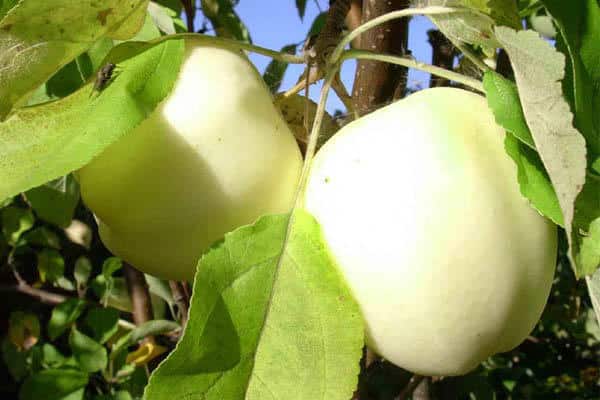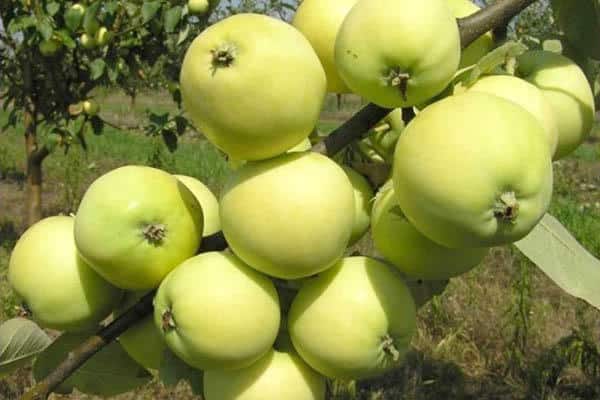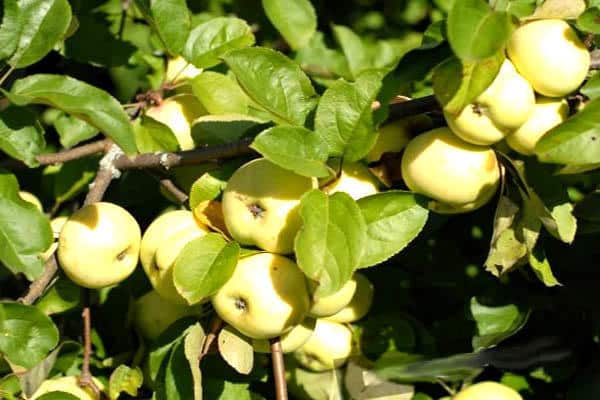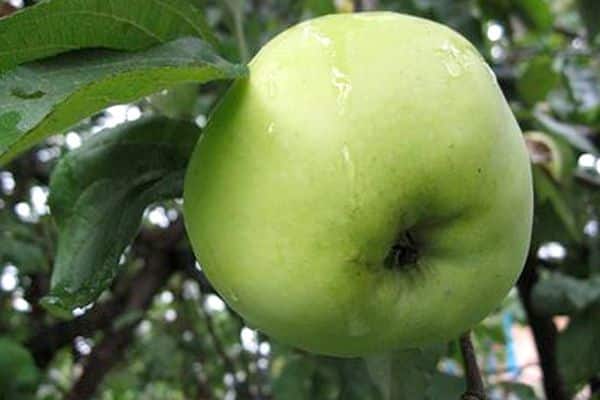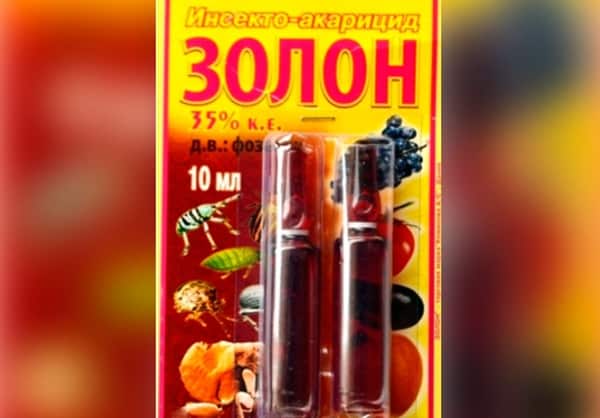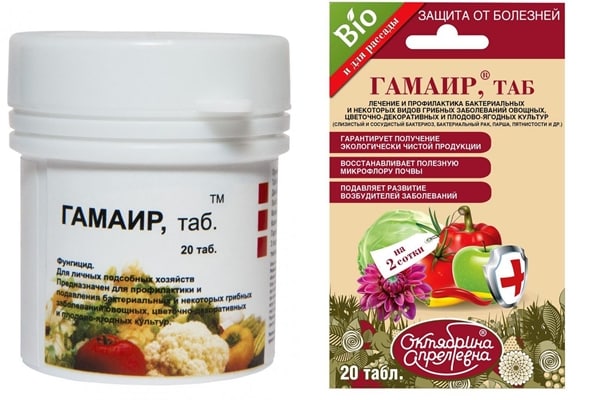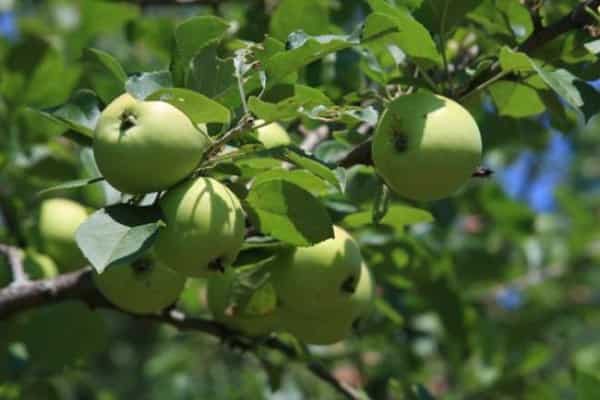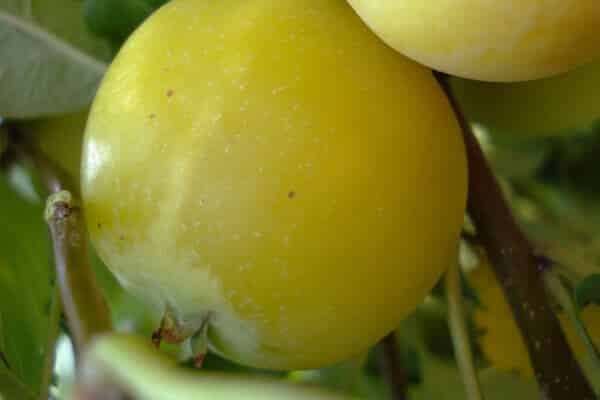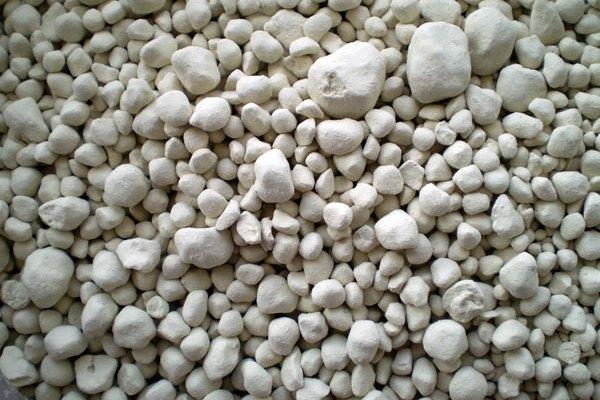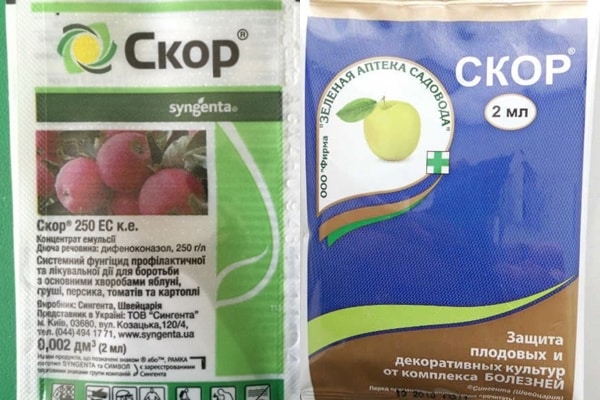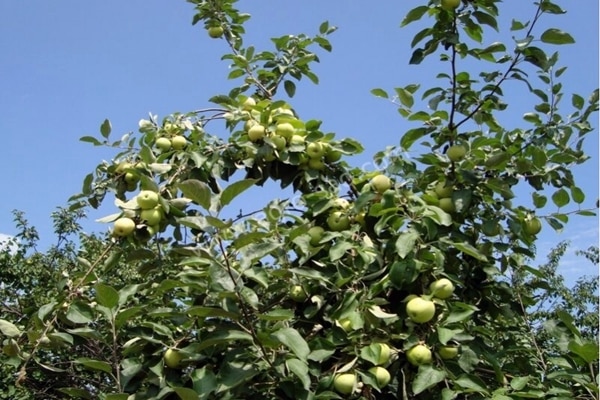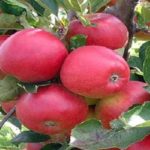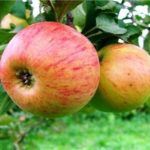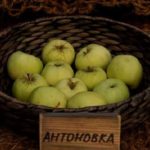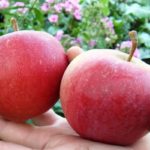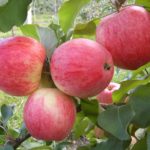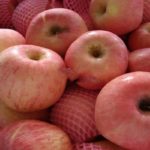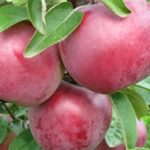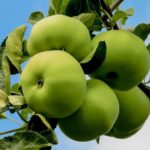White filling apples are one of the first to be harvested. Like all summer varieties, its fruits have a short shelf life. Despite this, gardeners still grow White filling in their gardens. Apples are eaten fresh or processed. Jams and preserves made from ripe White filling fruits have a wonderful taste.
- History of breeding and advantages of the variety
- Region of growth
- Main technical characteristics
- Tree height and crown width
- Root system
- Frost resistance
- Immunity to diseases
- Features of ripening and fruiting
- Planting and growing
- Beginning of fruiting
- Bloom
- Fruit ripening time
- Appearance and taste characteristics of the fruit
- Cyclicity of fruiting
- Basic rules for caring for an apple tree White filling
- Pollination methods
- Treatment against pests and diseases
- Frequency and abundance of watering
- Top dressing
- Crown formation technique
- Preparing for winter
- Problems encountered during cultivation
- Apples are falling
- Diseases and pests
History of breeding and advantages of the variety
The controversy surrounding the history of the White filling variety is still ongoing; some attribute it to folk art, while others consider the success of apples to be the merit of breeders. Many gardeners mistakenly call White Pouring apple trees Papirovka.
Both varieties are very similar in many technical parameters and in appearance. White filling is most common in the Middle Volga region, where it is considered the standard of taste. Seedlings are grown from seeds and used as rootstocks; they are suitable for grafting columnar forms of apple trees.
As a parent material, White filling was used by breeders to obtain new, more promising varieties. Today there are about 20 of them. The productive summer variety is beneficial as a stable supplier of early raw materials for summer harvesting.
Advantages of White filling:
- low requirements for soil structure;
- the variety shows average resistance to scab;
- low dependence of yield on the quality of agricultural technology;
- winter hardiness of flower buds and wood;
- precociousness.
Features of the variety: frequency of fruiting, lack of cover color. The disadvantages include poor yield, poor transportability, and a short storage period.
Region of growth
White filling apple trees grow well in the Moscow region and most other Russian regions. At one time, the variety was tested and entered into the State Register. It’s easier to list the regions where it is not recommended to grow White Naliv apple trees.Their list is quite short, it includes the following areas:
- Far East;
- Eastern Siberia;
- Middle and Southern Urals.
Main technical characteristics
A description of the main parameters of a fruit crop gives gardeners information about the degree of suitability of a variety for a given climatic zone. The immune properties and winter hardiness characteristics of White Fill allow one to assess possible risks, and knowledge of the future dimensions of the tree to choose the most suitable place in the garden.
Tree height and crown width
The trees are of a convenient size for small gardens; they have medium dimensions. The height of the trunk is up to 5 meters, the width and shape of the crown changes over the years. Experienced gardeners, using dwarf rootstocks, grow shorter trees; their height ranges from 2.5 to 3 meters.
The shoots are medium in thickness; in young apple trees they form a wide pyramidal crown, which becomes round by the age of 7.
When planting seedlings on a vigorous rootstock, you need to take into account the size of the crown of an adult apple tree; it is very large in diameter (5-7 meters).
Root system
The characteristics of the root system directly depend on the type of rootstock. When using seedlings on vigorous rootstocks, a powerful central rod is formed at the rhizome. The highly branched form of the root system is characteristic of White Filling trees grown from seedlings with rootstocks:
- dwarf;
- semi-dwarf;
- short.
Frost resistance
The concept of frost resistance of an apple tree is complex; the assessment is given when studying the crop’s resistance to cold temperatures during different periods of the winter season:
- beginning;
- middle;
- after thaws (sharp cooling, gradual cooling).
In all 4 cases, the released variety has no signs of freezing.The frost resistance of White filling allows the variety to be grown in the regions of the southeast, southwest, and northwest.
Immunity to diseases
A direct dependence of immunity to scab on the region of growth has been noted. The overall rating is average, but if we consider resistance to scab from a geographic point of view, then in Ukraine, the Stavropol region and the North Caucasus it is weak. In the central zone of the Russian Federation - average.
Features of ripening and fruiting
Flowering and fruiting occur on the ringlets. The first apples begin to ripen between the 10th and 15th of July. The variety is characterized by uniform yield, which becomes a real problem for many gardeners.
In particularly fruitful years, problems arise with fruit processing. They are stored for no more than 14-20 days, after which the pulp becomes tasteless and soft. The fruits become unsuitable for processing.
Planting and growing
White filling is worth planting in the garden. You need to have a productive summer apple tree in your garden. In order for a tree to have a long life and high productivity, you need to:
- take the purchase of a seedling seriously;
- select the most suitable corner of the garden for the tree;
- do not make a mistake with the planting dates;
- Prepare the planting pit according to all the rules.
In the south and in the snowy regions of the central zone of the Russian Federation, White filling is planted in the fall; in areas with little snow, it is recommended to plant seedlings in early spring.
Beginning of fruiting
Trees enter fruiting season early. White filling apple trees produce their first harvests at the age of 5-6 years. With proper care, trees bear fruit for at least 25 years. Crown care is necessary throughout life. In its absence, the fruits become smaller.
Bloom
An apple tree strewn with large white and pink flowers becomes a decoration of the garden. In the gardens of Central Russia, flowers bloom with the arrival of May.In the south (Stavropol Territory) and in the gardens of Ukraine, White Fill blooms in April.
Fruit ripening time
A mature apple tree produces an impressive harvest of apples. For a tree 7-12 years old, the norm is 150-200 kg of fruit per season. Apples ripen in the south on July 15-20, in middle zone orchards - from August 10 to 20, in the southern regions of Siberia the fruits ripen after August 20.
Appearance and taste characteristics of the fruit
It is not for nothing that the apple tree was called White Filling; its fruits are covered with white skin, its light green tint is almost invisible. If the fruits ripen on the southern side of the crown and are well illuminated by the sun, then a faint blush of a pale pink color appears on them.
The taste of the sweet pulp has a slight sourness. Ripe apples emit a pleasant, subtle aroma. On young trees the fruit size is larger than on old trees. They weigh on average about 150 g, and over the years they become smaller, their weight by the age of 20 does not exceed 60 g. The shape of apples is regular, round-conical.
The beneficial properties are determined by the composition of the pulp:
- up to 9% sugars;
- up to 22 mg per 100 g of ascorbic acid raw material.
Only by having an apple tree of this variety in your garden can you enjoy the wonderful taste of the fruit. You won’t find them in the supermarket; they are stored very little and deteriorate during transportation.
Cyclicity of fruiting
The apple tree has sharply periodic fruiting. This, short shelf life plus low transportability make White filling unattractive for commercial gardens.
Summer apples need to be picked and quickly processed. For large families, this variety of summer apples is beneficial. In winter, the cellar will always have a supply of jars of apple compotes, preserves and jams, and in summer the table will be bursting with an abundance of delicious apples, apple pies, and desserts.
Basic rules for caring for an apple tree White filling
The apple tree is cared for traditionally. Several years after planting, they are closely engaged in the formation of the crown. Fertilizers are an essential component of care. They are added throughout the long life of the apple tree. At any age, watering plays an important role for fruiting and the health of the fruit tree.
Pollination methods
In the absence of pollinating varieties, Belyi naliv does not produce fruit - the trees are self-sterile. There are no problems with the harvest if Antonovka, Grushovka Moskovskaya, Ottawa, and Mantet trees grow in the garden or next to it. Any apple trees that bloom at the same time as the White Fill apple trees are suitable as pollinators.
Treatment against pests and diseases
There are excellent preparations on sale for codling moths, aphids, apple blossom beetles and leaf rollers. Deserved good reviews:
- "Calypso";
- "Binomial";
- "Zolon."
Trees suffer more from insect infestation in the first years of their life. Mature apple trees are more resistant, but they are more difficult to treat against pests due to their dense crown and high altitude.
Increased air humidity (rain, fog) provokes the activity of the marsupial fungus, which causes a common disease of fruits and leaves - scab. To prevent it, every autumn they carry out preventive treatment of the trunk and branches with “Zircon” or “Fitosporin”.
In the fall, all damaged branches are cut out and destroyed, fallen leaves are raked out and burned. The trunk is cleaned and whitened, adding a solution of copper sulfate to the whitening. In the spring, prevention continues:
- Before the buds swell, the crown is treated with copper sulfate (10 liters of water, 100 g of product);
- when the buds open, all branches are sprayed with “Gamair”;
- The fruit-bearing tree is sprayed with colloidal sulfur.
Frequency and abundance of watering
A great need for watering remains during the period of mass fruit setting and their formation. The frequency and volume of watering depend on weather conditions and soil structure. On light soils, moisture leaves quickly, on heavy soils more slowly.
Water consumption per watering for a 1-2-year-old tree is 2-3 buckets; for a fruit-bearing apple tree, the consumption is calculated based on the size of the crown - 50-100 l/m². The frequency of watering is different for fruit-bearing and non-fruit-bearing trees.
The first ones are watered several times a season: in the spring - before the buds open, during the opening of the buds, at the beginning of the fruiting period. Apple trees up to 5 years old are watered every week depending on the weather, if the summer is hot and dry. In autumn, just before frost watering the apple trees any age. The last watering should be plentiful; it helps protect the roots from freezing.
Top dressing
For the first 2 years, the young tree receives nutrition from a fertile mixture of garden soil, organic matter and mineral fertilizers, which was poured into the hole during planting of the seedling. In the third year in the fall, the apple tree is fed for the first time.
The fertilizer consumption, which will be given in the table below, is given per 1 m². The area of projection of the crown onto the ground is taken as the basis. As the apple tree matures, it will increase in size and, accordingly, the rate of application of mineral fertilizers will increase.
| Season | Name | Quantity |
| Spring | Urea | 10 g |
| Summer | Nitroammofoska | |
| Autumn | Humus | 10 kg |
| Potassium chloride | 15 g | |
| Superphosphate | 15 g |
From mid-July, fertilizers containing nitrogen are stopped; they reduce the frost resistance of shoots and buds, and worsen the immunity of the apple tree.
Crown formation technique
When planting a seedling in spring, the crown is formed before or immediately after planting.If the seedling is planted in the fall, then the first formative pruning begins next spring:
- the crown of the central conductor is cut off at a height of 0.8 m from the root collar;
- damaged shoots are cut out;
- the remaining branches - the basis of the future crown - are shortened by a third of the length.
Every year in the spring before the buds open and in the fall before the onset of frost, apple trees are subjected to careful sanitary pruning. With its help, the crown is maintained in a healthy state.
All branches damaged by disease and bad weather, as well as shoots growing inside the crown or perpendicularly upward, must be removed. A properly formed tree has 2-3 tiers of branches clearly visible. The lower shoots of the apple tree should be slightly longer than the upper ones.
Preparing for winter
The harvest cannot be stored for a long time and left on the tree. It needs to be quickly removed from the apple tree and put into processing. In the fall, the apple tree, which has rested from fruiting, is prepared for winter. The trunks of young trees are wrapped in roofing felt or burlap, and the trunk circle is covered with a layer of mulch (manure). In those regions where there is little snow in winter, old apple trees are hilled.
Problems encountered during cultivation
Often an apple tree that has reached fruiting age does not bloom. Supposed reasons for the lack of fruits:
- a gross mistake when planting a seedling - the root collar is buried;
- lack of apple trees of a different variety in the garden;
- depleted soil, lack of fertilizing;
- disease;
- insects;
- the crown is formed incorrectly.
On acidic soils, the productivity of White filling is low. The problem is solved with the help of lime. It is applied no more than once every 4 years. 200 g are used for each square meter.
Apples are falling
Fruits fall off for various reasons. Heavy workload is one of them.In favorable weather years, too many ovaries form on the apple tree, and it may shed some of them. First of all, fruits damaged by the codling moth fall from trees. In dry summers, if watering is rare, the tree also drops apples.
Diseases and pests
Apple trees weakened by poor care are more likely to suffer from pests and infections. Among the insects you need to be wary of are aphids and leaf rollers. A fungal infection causes significant damage to the crop. Fruit scab can significantly reduce the yield.
Starting in spring, experienced gardeners carry out preventive treatments against powdery mildew and scab:
- before the buds bloom, spray with “Skor” or a solution of copper sulfate;
- faded apple trees are carefully treated with copper oxychloride;
- at the end of autumn, all fruit trees are cleaned and once again treated with copper sulfate.
Signs of scab on White Fill: brown spots on the leaves, cracks and dark spots on the skin. In autumn, leaves from a diseased tree must be burned. Clean the area around the tree trunk and dig shallowly. Cover the trunk and large branches with a layer of lime.
Apples from the summer harvest help in the treatment of many ailments. With their help, they normalize the functioning of the intestines and stomach, cleanse the body of toxins, and normalize cholesterol levels. Eating the fruits of White Fill relieves the symptoms of gout and chronic rheumatism, and strengthens the body's defenses. One White Naliv apple tree is enough to satisfy a family’s need for summer-ripening apples.

